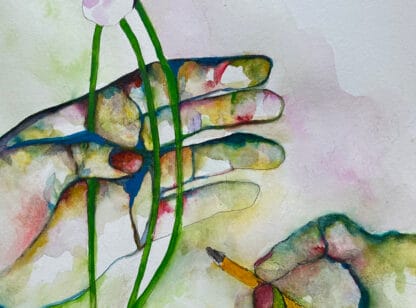I just returned from Park City, Utah. As a desert native, I’ve never fully witnessed the changing of the seasons. There is something profound that takes place when one is able to look at a valley of aspen trees transforming their green palette of leaves into the vivid autumn colors of orange, red, gold and brown. It can also be a time for self-reflection and a time to look at nature, its rhythms and what the orchestration of the environment in perfect synchronicity tells us about our own choices and transformations.
 As days grow shorter, and nights grow longer and cooler, biochemical processes in deciduous trees begin to create transformation. The tree pulls its nutrients from many sources just like us. Sunlight helps manufacture sugars through the chlorophyll in the leaf, creating green pigment. The soil houses organisms vital to the forest ecosystem, and fallen leaves become the food of the earth. The tree taps water through its roots which transpires into the air through its leaves, and the tree captures carbon from the air and gives off oxygen. When the tree prepares in fall to go into hibernation for winter, the veins in the leaves close off, preventing the sugars, chlorophyll and green color to spread. The trapped sugars that have no place to spread promote the production of other trace elements that react with the sun to produce a spectacular array of autumn colors, before falling to the ground. Trees could not survive without this annual cycle of shedding and replenishment from the leaf. The many beautiful interrelationships that are so visible in looking at an autumn landscape cause us to learn about ourselves.
As days grow shorter, and nights grow longer and cooler, biochemical processes in deciduous trees begin to create transformation. The tree pulls its nutrients from many sources just like us. Sunlight helps manufacture sugars through the chlorophyll in the leaf, creating green pigment. The soil houses organisms vital to the forest ecosystem, and fallen leaves become the food of the earth. The tree taps water through its roots which transpires into the air through its leaves, and the tree captures carbon from the air and gives off oxygen. When the tree prepares in fall to go into hibernation for winter, the veins in the leaves close off, preventing the sugars, chlorophyll and green color to spread. The trapped sugars that have no place to spread promote the production of other trace elements that react with the sun to produce a spectacular array of autumn colors, before falling to the ground. Trees could not survive without this annual cycle of shedding and replenishment from the leaf. The many beautiful interrelationships that are so visible in looking at an autumn landscape cause us to learn about ourselves.
What annual cycles do we pass through, and how are we replenished each and every day? Nature has a seasonal cycle. In many ways we humans do the same–intuitively wearing warmer clothes when winter comes — yet when certain elemental conditions exist, do we listen and respond accordingly?
We are very much like the tree. We pull nutrients from the sun, that which we ingest, and the steps we take to protect and treat our bodies. We feed ourselves psychologically by those with whom we associate, by what we tell ourselves and by the actions we take each day. There is a lot we can learn from the tree and it behooves us to take time in the fall before the changing of the season to ponder all these variables.
As desert dwellers, we cannot watch the magnificence of fall trees; however, we should take time to look at fall pictures, to imagine the phenomenon of nature’s cycles, and to practice some personal introspection. Reflect on the cycles in your own life and the choices that you make each day that affect your personal growth and health outcome.



















































Comments (0)